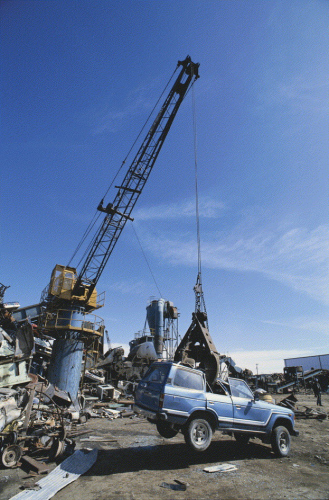
EuCIA has issued a position paper on the revision of the European Commission's Waste Framework Directive calling for the disposal of composites waste by the cement kiln route to be accepted as ‘recycling’. Without this change EuCIA says composites will not be able to meet the recycling targets of European waste directives like the End of Life Vehicle (ELV) and Waste Electrical and Electronic Equipment (WEEE) directives and the composites industries in other regions in the world will leave Europe far behind.
In its statement EuCIA states its agreement on many of the principals of the directive but asks the European Parliament to take into consideration two facts. Firstly, that composite materials combine the advantages of several materials into one material which results in very high strength, low weight, corrosion resistance and other advantageous properties which from the environmental point of view lead to very significant energy savings and reductions of emissions over their whole long useful lifetime. And secondly, that because of their specific nature as a combination of materials composites need ‘recycling’ solutions that allow material recycling in combination with some energy recovery.
EuCIA asks members of the European Parliament (MEPS) to support composites by introducing EuCIA's proposed amend-ment that ‘recycling’ means the recovery of waste into products, materials or substances whether for the original or other purposes. It does not include energy recovery except when energy recovery is an integral inseparable part of the recycling process.
Composites recycling
The composites waste management process EuCIA proposes starts with a recycling process carried out by European Composites recycling Services Company (ECRC) in order to make the waste a suitable resource for cement kilns. The manufacturing process for making cement requires a lot of energy (which is partly provided by the resin fraction of the composite material) and raw materials (provided by all other ingredients of the composite material). This energy turns the raw materials (present in the composite waste) into anhydrides which give the cement its binding power. This means the energy is incorporated into the cement and becomes part of it (which is different from pure incineration). When mixed with water, and whilst recombining with water, the cement uses this energy to bind together the mortar and stones. Some energy recovery will therefore always be an inseparable integral part of the recycling process when composites are recycled via the cement kiln route.
| Typical FRP composition | Use in cement |
| 25-35% resin | Energy for making cement |
| 25-45% glass fibre | Raw material for cement |
| 20-50% inert filler Al(OH)3/CaCO3 | Raw material for cement |
EuCIA believes that without the cement kiln route complete recycling of all FRP/composite waste will be impossible.
Support
The EuCIA position paper and amendment proposal are supported by ECRC, which was created in 2004 by EuCIA and the resin and glass fibre manufacturers to set up a European wide composites recycling scheme. To get the proposed amendment introduced into and accepted by the European Parliament (EP) requires the support of a lot of European Parliamentarians (MEPs). In order to reach the required majority in the EP the support of MEPs of the new EU Member States is also required but in several of these a national composites industry association was not exist.


